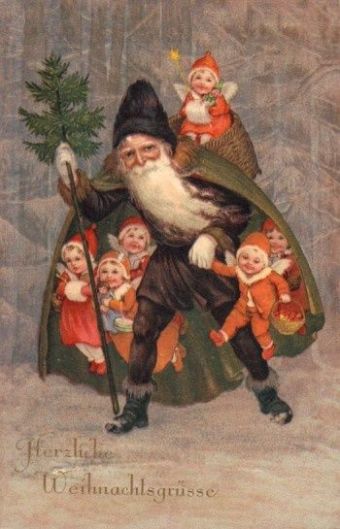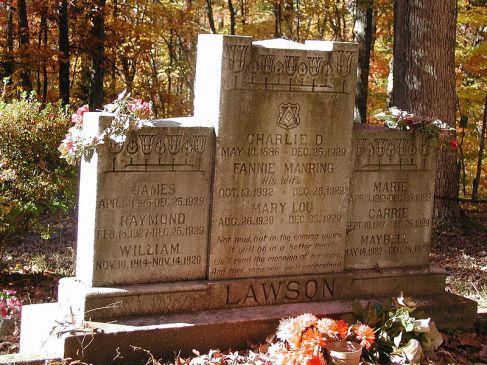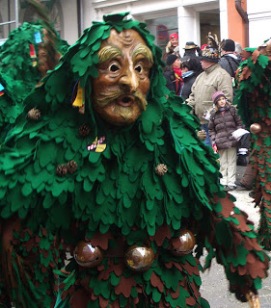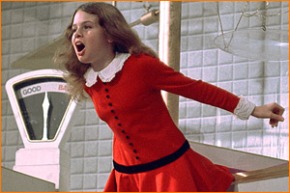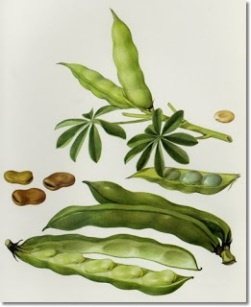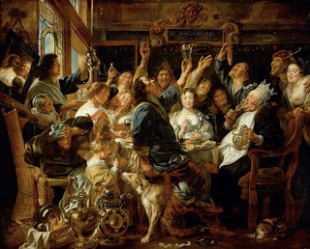A hallmark of Christmas is the music of the season. We are all too familiar with the thematic elements of the overly cute, romantic, sentimental and of course, sacred songs of the holiday season.
When you think about it, it isn’t terribly difficult to find curiously macabre songs and carols among the pack. After all, even by Christian standards, this is the celebration of a figure who was always been linked to death, beginning with a king provoked to slaughter every infant male in his realm. All of this then crowned with magical and mysterious pagan rites.
1) Down In Yon Valley
Down under that bed there runs a flood
Bells of heaven I hear them ring
Half run in water, half run in blood
There are a number of different versions of this song, passed down through various cultures through the years. Like so many songs an early version was carried over to the US from Europe and for the most part, passed on and preserved by the people of the Appalachians, where a particularly disturbing version was collected, believed to reference the ancient custom of every few years draining the blood out of one’s king onto the soil to ensure its continuing fertility. I guess it’s not so great to be King.
2) The Coventry Carol
This carol was originally contained within a mystery play, retelling the Christmas story. This song is sung by the mothers of the little boys under the age of two, who are destined to be brutally murdered by King Herod’s men. In the last lines, they say goodbye to their children.
A haunting and heartbreaking piece, sure to bring you close to tears if you happen to be a mother.
O sisters too, how may we do,
For to preserve this day
This poor youngling for whom we do sing
Bye, bye, lully, lullay.
Herod, the king, in his raging,
Charged he hath this day
His men of might, in his own sight,
All young children to slay.
That woe is me, poor Child for Thee!
And ever mourn and sigh,
For thy parting neither say nor sing,
Bye, bye, lully, lullay.
3) The Holly and the Ivy
By far, one of the most popular Christmas songs, The Holly and the Ivy. Although burdened with the stamp of Christianity, maintains it’s pagan fertility imagery – so obvious, there is no need to explain. It’s Christmas Sexy-Time!
Oh, the rising of the sun and the running of the deer,
The playing of the merry organ, sweet singing in the choir.
The holly bears a blossom as white as lily flower…
(I love me some Maddy Prior)
4) We Three Kings
One of the most popular Christmas songs. Little kids sing it at school, it plays over the speakers at the grocery story. We all know it.
Myrrh is mine: Its bitter perfume
Breaths a life of gathering gloom.
Sorrowing, sighing, bleeding dying,
Sealed in the stone-cold tomb.
5) I Wonder as I Wander
Composer and ethnomusicologist, John Jacob Niles, was in attendance at fundraising meeting held by evangelicals who had been ordered out of town by the police, most likely to collect songs. In his autobiography, he writes the following:
A girl had stepped out to the edge of the little platform attached to the automobile. She began to sing. Her clothes were unbelievably dirty and ragged, and she, too, was unwashed. Her ash-blond hair hung down in long skeins…. But, best of all, she was beautiful, and in her untutored way, she could sing. She smiled as she sang, smiled rather sadly, and sang only a single line of a song.
It was from this fragment that Niles composed I Wonder As I Wander.
6) Bethlehem Down
Composer Peter Warlock was experiencing financial difficulties. He had recently befriended poet and party boy Bruce Blunt. The first account of their mutual company was from a press report detailing their arrests for being “drunk and disorderly.” Lack of funds to fuel the party life prompted their collaboration on Bethlehem Down, which, in turn, won them the Daily Telegraph’s annual christmas carol writing contest. The prize money funded an “immoral carouse” on Christmas Eve in 1927.
When he is King they will clothe him in grave-sheets,
Myrrh for embalming, and wood for a crown,
He that lies now in the white arms of Mary,
Sleeping so lightly on Bethlehem Down.
Here are some more contemporary Christmas fare that deal in death and the macabre:
7) Christmas With The Devil
I cannot resist including this cover of Spinal Tap’s Christmas With The Devil from Judith Owen. It’s been a favorite for years. Hope you enjoy it as much as I do. The lyrics are great.
The elves are dressed in leather
And the angels are in chains
The sugar plums are rancid
And the stockings are in flames
There’s a demon in my belly
And a gremlin in my brain
There’s someone up the chimney hole
And Satan is his name.
8) Justice Delivers It’s Death
Sufjan Stevens putting all that gift giving, Back Friday stuff into perspective.
Oh, I’m getting old
Everyone wishes for youth
How I have wasted my life
Trusting the pleasure it gives
Here on Earth.
9) Grandma Got Run Over By A Reindeer
I know you’re saying, “I know this one already!” and you do, but I have a feeling you might like this version by The Uncommon Houseflies much better.
10) The Murder Of The Lawson Family
On Christmas, 1929 Charlie Lawson took his family (37-year-old wife Fannie and their children: Arthur, 16; Marie, 17; Carrie, 12; Maybell; 7, James, 4; Raymond, 2; and Mary Lou, 4 months) into town to buy new clothes and to have a family portrait taken. Since they were far from wealthy, this seemed unusual. The new clothes ultimately became burial outfits. On that day he began the slaughter with his daughters, Carrie and Maybell, who were setting out to their uncle and aunt’s house. Lawson waited for them by the tobacco barn; when they were in range, he shot them with a shotgun, then ensured that they were dead by bludgeoning them. He then placed the bodies in the tobacco barn.
Afterwards, he returned to the house and shot Fannie, who was on the porch. As soon as the gun was fired, Marie, who was inside, screamed, while the two small boys, James and Raymond, attempted to find a hiding place. Lawson shot Marie and then found and shot the two boys. Lastly, he killed the baby, Mary Lou. It is thought that she was bludgeoned to death. After the murders, he went into the nearby woods and, a few hours later, shot himself. The only survivor was his eldest son, 16 year-old Arthur, whom he had sent on an errand just before starting his deadly work. The bodies of the family members were found with their arms crossed and rocks under their heads. The gunshot signaling Charlie Lawson’s own suicide was heard by the many people who learned of the gruesome event on the property and had already gathered there. [From Wikipedia]
11) Christmas Tree On Fire
Holly Golightly left her tree up long after it dried out and died, even after her boyfriend warns her to take it down. Her trailer catches on fire and her vain attempts to beat the fire down with a tube sock prove fruitless. She dies. Or so we assume. I have been informed by more than one person this will likely be my fate.
12) Another Lonely Christmas
PRINCE, ya’ll. What more needs to be said? Really though, Prince’s contribution to the Christmas lineup is all about death. Christmas death.
Baby you promised me you’d never leave, Then you died on the 25th day of December.
Ain’t that a bitch? You can listen to a bit of it on iTunes
13) 1913 Massacre
Another, but lesser known murder ballad that took place at a Christmas Eve gathering for copper miners and their families. When it was all over seventy three were dead, almost all of them children. Read more about the tragic event here.
